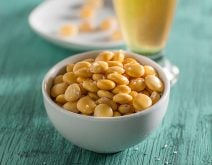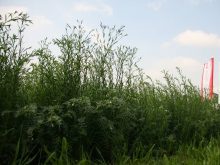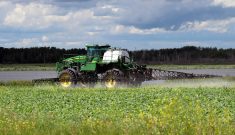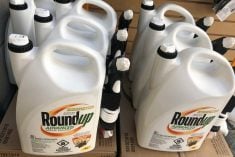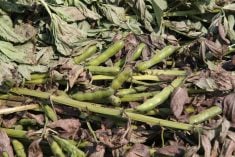Along with more pulse crops in Prairie farmers’ rotations, there has also been more research into the impact these crops have on our soil. Agriculture and Agri-Food Canada researchers have recently published several research papers on this issue.
This work has led one of these researchers, Dr. Chantal Hamel, to conclude that there are several good reasons to plant pulses. First, she says, “it is a good replacement for summerfallow, especially when using pea and lentil due to their short growing seasons.” That short growing season is good because “it leaves a lot of water in the soil for the next crop.” Residual nitrogen is also left in the soil after a pulse crop, so your fields will get a free shot of nitrogen, says Hamel.
Read Also

Claas brings 1000 Series SP forage harvesters to Canada
In mid-August, Claas unveiled its new line of Jaguar forage harvesters at an event in Visalia, California, deep in the heart of that state’s dairy region.
In terms of improving next year’s soil, researchers judged yellow peas to be the “best” crop for your rotation. Yellow peas were “better” than chickpeas and often similar to lentils. This was partially for microbial reasons, but also for water conservation and nitrogen input into the soil. Chickpeas suck a lot of water out of the soil, whereas peas and lentils stop growing earlier and therefore leave more water behind for the next crop, says Hamel.
It’s difficult for researchers to measure exactly how much nitrogen pulses leave behind in the soil, says Hamel, but “what we find is that pulses increase the level of available nitrogen in soil, and this is especially true for pea. This soil fertility building effect is attributed to good nitrogen fixation.”
What’s alive underground
When they looked at soil after pulses had been planted, researchers found less fungal diversity. This is not a good thing. For this reason Hamel recommends not growing pulse crops in the same field year after year.
When there is less fungal diversity, there can be an increase in disease patterns. Fungal diversity lowers the opportunity for one pathogen to overtake everything.
But fungi are only part of the story. Bacteria also make their home in the soil, and some of these bacteria can be antagonistic to fungi, or promote plant growth. Researchers found that an increased frequency of pulses in cropping systems increased the level of bacterial diversity.
Overall, the research suggests that after a pulse, some pathogens may be increased; in fact, Hamel says that they do see “an increase in fusarium (a fungus) after a pulse, and pulses are sensitive to disease.” So despite the fact that pulses increase productivity in several ways (nitrogen input, water conservation, and bio-stimulation), too much of a good thing is bad and farmers need to be careful with their rotations to ensure soil integrity.
What we know about pulses
Through ongoing research we are learning more and more about how pulses operate. Agriculture and Agri-Food researcher Dr. Chantal Hamel says:
- Chickpea “is a tricky plant. It is often sick. If you repeat chickpea, you won’t be lucky with disease.” It also doesn’t help with water conservation. If moisture is limited, peas or even lentils would be better choices.
- “Pea is a little more sensitive to disease. Lentils appear to be more resilient,” Hamel said.
- “Nitrogen accumulates more with pea,” Hamel said. She would like to see more work done with nitrogen recommendations after peas, as she believes rates could probably be reduced from current recommendations.
- Canola contrasts with legumes in rotations; putting a pulse before wheat is also good, says Hamel, and planting wheat is good for long-term soil quality as it has lots of roots and nourishes the soil. The root systems of pulses “are smaller, more limited.”
And maybe the key point for all rotations and long-term planning: “There are no bad plants for the soil, they just need to be used appropriately.”




